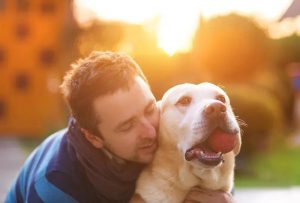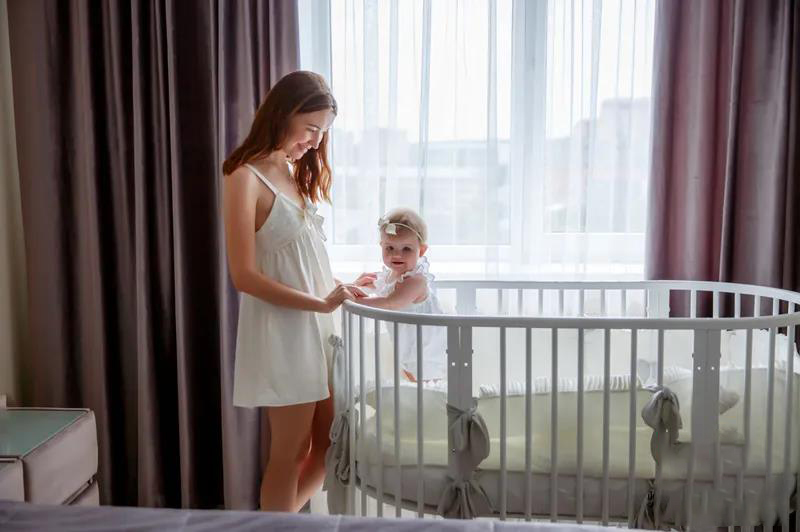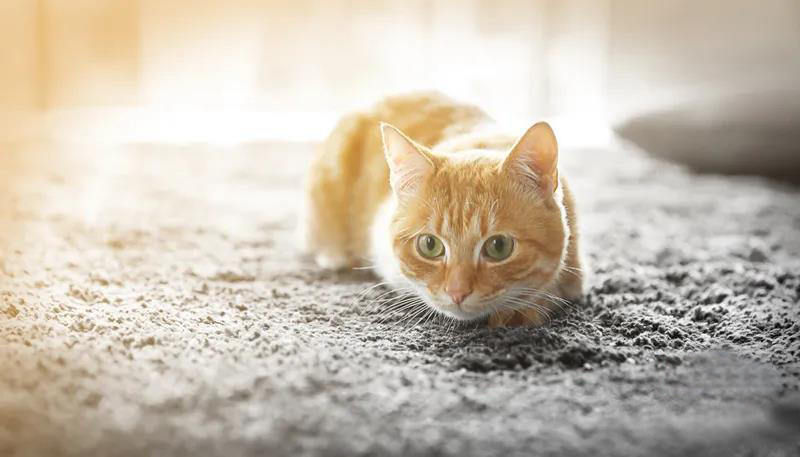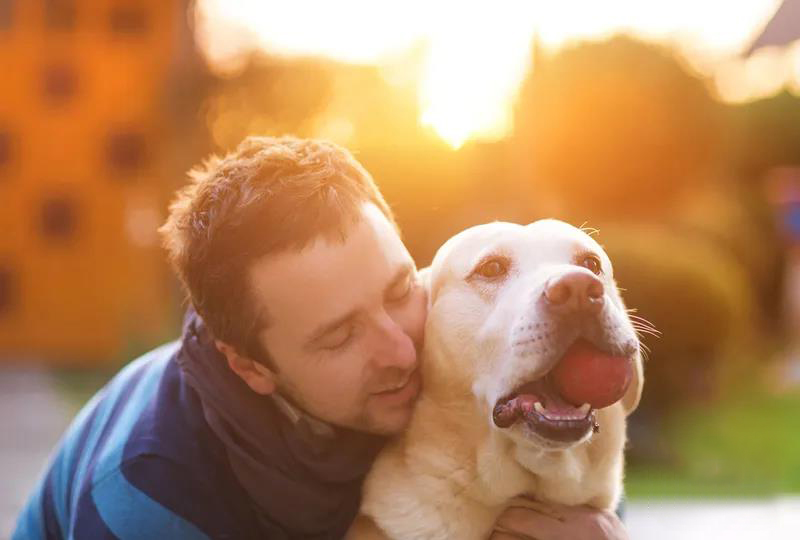
In the 21st century, we love those furry pets so much, and many people regard their cats and dogs as family members.
However, the shit scavengers are not sure how pets view them. We know that we are attached to pets, so do they also “stick” to us?
The law of attachment
When psychologists talk about attachment, they don’t just mean warm and fuzzy feelings. They define attachment as a connection with someone who provides safety and security. Think about the role that parents play in front of one-year-old children: children like to wander around their parents; parents will feel gloomy when they leave; they will feel confident enough to explore when they know that they will support them.
Of course, we cannot directly ask pet owners whether they provide this kind of emotional safety. However, the animal investigator used a test. This test is the scary-sounding “Ainsworth Strange Situation Test”, originally designed by child psychologist Mary Ainsworth.

In the original version of the test, the child explores a strange room full of toys in the presence of any parent, or is alone, or parents and strangers will continue to enter and exit during the process. Children show a safe attachment: they explore more in the presence of their parents, they interact more with strangers when they are nearby, and their emotions change significantly when the parents leave and return.
Quiz on pets
When the researchers tried to apply this test to pets, they realized that cats and dogs without special training have less ability to concentrate than toddlers. In the original experiment, children always explore the room with their parents first, and strangers come in afterwards, but this process is not suitable for testing pets. By the time the second person appeared, some pets had completely lost interest in the room, so the experimental results were also invalid.
In order to keep the pet’s attention during the test, the scientist had to switch the order of the different parts: some dogs will explore the room with the owner first, and some dogs will explore the room with strangers first. In addition, some researchers also introduced a second room full of toys, which was only opened midway through the test.
When Robyn Palmer and Deborah Custance performed the test on 38 dogs, they found the following results: Dogs will explore more when they are with their owners. When the owner is present, the dog explores unfamiliar rooms the most; when he is with strangers, his exploration behavior is significantly reduced; when he is alone, he hardly explores the “dog”. When the second room is opened, they are more likely to explore when accompanied by the owner; when they are with strangers, they will instead wander around the door of the first room.

Dogs play more with their owners, and they play more with others when their owners are present. When alone with the owner or stranger, the dog plays more with the owner. However, as long as the host is present, they are equally willing to play with others. Compared to being with a stranger or being alone with a “dog”, a dog in the presence of the owner is more willing to play with toys.
The dog will care if the owner comes back. Generally speaking, when no one is present, the dog usually stays alert, facing the direction of the door where the owner is leaving, or actively looking for the owner.
All of these responses are similar to those of a baby who is attached to his parents. The difference is that many young children retreat to their mothers when a stranger comes in for the first time, but few dogs retreat to their owners. Nonetheless, the researchers concluded: “In many ways, the owner will bring a sense of security to the dog, just like a parent will bring a sense of security to the baby.”
When Alice Potter and Daniel Mills repeated the experiment on 20 cats, the remaining 18 successfully completed the experiment.
So what does this experiment show? The cat’s behavior hardly changes regardless of whether the owner or stranger is present or when there is no one. However, when the owner leaves the cat to the stranger, they bark more than the stranger leaves the cat to the owner.

Overall, there is almost no evidence that cats have a sense of attachment to their owners similar to that of dogs and children to their owners/parents.
The researchers realized that their findings might irritate cat owners everywhere, so they wrote: “We do not deny that cats may have their own social preferences, nor do we deny that some cats may form such attachments under certain conditions. , We have no intention to imply that cats will not form certain deep social connections and will not form a connection with their owners.
In a nutshell, your cat may not be as deeply attached to you as a dog.
Pet attachment and separation anxiety
The attachment to the owner is similar to the attachment of a child to the parent, which may explain why some pets develop separation anxiety when they are kept alone at home. From the perspective of human young children, separation anxiety is a normal response and may be an evolutionary strategy to prevent helpless babies from being ignored.
From a dog’s perspective, a recent study suggests that the level of “normal” attachment to the owner may be sufficient for many dogs to experience separation anxiety. Interestingly, separation anxiety may also appear in cats, although it is not that common.
So, how do dogs (and possibly some cats) form a childlike attachment to their owners? It turns out that all of this may be due to chemical reactions.
Hormones are not just for humans
You may have heard of oxytocin, which is a natural hormone that not only causes uterine contractions during childbirth, but also helps form a mother-child bond. Guess what? Many animals also secrete this hormone, including cats and dogs.
Interestingly, it turns out that dogs secrete oxytocin in large quantities when they are petted or when they face their owners. In order to verify the idea that oxytocin can indeed promote bonding, Giulia Pedretti and colleagues asked dogs to inhale oxytocin through their noses and then observed their behavioral changes.
After ingesting oxytocin, the dog spends more time wandering around the owner. If they are chained and unable to get close to their owner, they will spend more time watching their owner.
In other words, this is a self-reinforcing cycle: being with the owner can increase the secretion of oxytocin, and this makes the dog want to stay with the owner more.
Being with the owner for a long time will further increase the dog’s oxytocin level, making it harder to separate the dog and the owner.

The role of oxytocin in the relationship between humans and cats has received less attention. However, a student at Oregon State University did a similar experiment on cats and completed an honorary degree thesis on this basis.
Naomi Sakaguchi smelled oxytocin to 40 stray cats in containment and gave them a placebo at different times to compare their behavior at different times. In this study, compared to taking a placebo, cats were more willing to approach the people involved in the experiment after taking oxytocin—including Naomi herself and the administrator of the shelter. Unlike dogs, cats don’t spend more time playing with people after approaching them.
However, we should remember that these are contained cats, not those domestic cats that have been tested with their owners. Further experiments will investigate whether (domesticated) cats, like dogs, will strengthen their bond with their owners when the level of oxytocin increases.
Can’t make a slap
The connection brought by oxytocin is two-way. Studies have found that when people spend time petting or staring at pets, their oxytocin levels also increase. An increase in oxytocin will improve mood, such as increased trust, reduced fear, and lower blood pressure and other physiological changes.

In other words, positive interaction with dogs will make us calmer and our relationship with pets will be deeper. As a result, some researchers have put forward this idea: In the long history of humans and dogs, dogs are more likely to “hijack” the innate connection mechanism that humans originally reserved for children. And under all other conditions being equal, dogs have higher levels of oxytocin than wolves, which may allow dogs to be more able to establish a bond with us.
The two-way attachment between humans and pets shows that humans are more willing to “take practical actions.” When asked how much money they are willing to spend on pets, pet owners usually say that they will spend more money on dogs than cats. Respondents included people who actually have pets (such as those who have both cats and dogs) and people who have assumed that they have pets. The strange thing is that under hypothetical circumstances, people are more willing to spend money on a “cat that behaves like a dog” rather than a “dog that behaves like a cat.”
Why does being like a dog make people more willing to spend money? Researchers speculate that this is related to a sense of control over pet behavior: dogs are more obedient than cats. This phenomenon may partly stem from the history of dog domestication, because humans domesticated dogs thousands of years earlier than cats. However, the attachment of dogs to us may also play a role, which makes them more motivated to please humans. If cats have less attachment to us, then it makes sense that they are less willing to listen to human instructions.
Nowadays, pet owners, especially dog owners, increasingly regard themselves as pet parents. This means that when they enter a new relationship, they will take into account the happiness of their pets, avoid disputes at home to scare cats and dogs, and may even fight for pet custody. They may also call cats and dogs “babies.”
No matter how each individual views these words, the pet’s parents can’t be wrong. In many ways, the relationship between them and their pets is indeed the same as the parent-child relationship. And seriously, can you blame them? After all, it was oxytocin that made them do this.
Comments